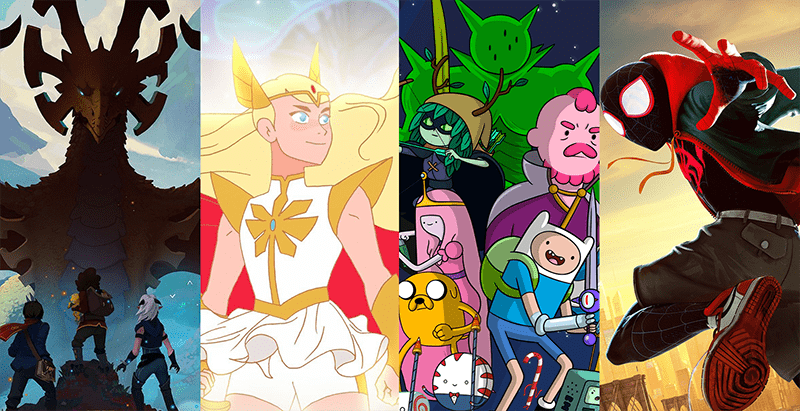Anabel Sanchez
Online Editor
For decades, animation has managed to provide a platform that showcases fantasies and stories that stem from the furthest reaches of creators’ imaginations. Now, with the American cultural shift and the advent of social media, fans have been able to voice their desires—through no shortage of impassioned interactions—to see inclusive characters in these animated works.
Since then, a flurry of series have materialized to contribute animated characters that go beyond the dated archetype and that cater to gender, ethnic, impaired, disabled and LGBTQ representation. While not all live up to their hype, some are truly memorable when they are treated with the respect and care that characters and storylines deserve.
One of the earliest examples was with Nickelodeon’s The Legend of Korra. The hero was Korra, a young female of color with extraordinary abilities. In the final season, Korra becomes close with a former romantic rival, Asami. The confirmation of their relationship via the showrunners became a major victory for those who wanted proper LGBTQ representation in a major animated series.
More recently, Cartoon Network’s Steven Universe and Adventure Time both depicted elements that catered to gender and lesbian representation. The cast of Steven Universe consisted of genderless alien creatures and a half-human who openly had feminine mannerisms. There was even a groundbreaking lesbian proposal and kiss between the characters Ruby and Sapphire.
Meanwhile, Adventure Time featured a long-teased pairing confirmation between the characters Princess Bubblegum and Marceline the Vampire Queen. This culminated in a kiss which was received with enormous fanfare online.
In Marvel’s award-winning Spider-Man: Into the Spider-Verse, fans were treated to teen protagonist, Miles Morales, who is half Puerto Rican and half African-American. This depiction of an ethnically mixed character with “spidey” abilities has arrived at a time when depicting cross-cultural characters is fiercely desired by fans who have similar backgrounds.
Netflix is also a key platform for representation. In the recently premiered The Dragon Prince, audiences were introduced to not only a king of color, but also two half-brothers with different racial backgrounds, skin tones and hair textures.
The Dragon Prince also includes a trailblazing female character with General Amaya, the brothers’ deaf aunt. In her scenes, one gets to view the meticulous and often humorous sign-language exchanges that she has with her nephews and subordinates. With Amaya, the deaf community have a strong deaf representative in animation.
Netflix also has no shortage of LGBTQ representation. In BoJack Horseman, the beanie-wearing Todd Chavez was declared asexual in season 3, making him the first self-identified asexual character in an animated series.
There’s also Voltron: Defender of the Universe and She-Ra and the Princesses of Power. But while both have LGBTQ representation, the storylines were respectively received differently. She-Ra has been praised as a series for not only featuring female protagonists as leads as well as lesbian relationships but for also having LGBTQ creators on staff.
Meanwhile, in Voltron, Shiro, a lead Asian and disabled character, was confirmed gay. However, the move was met with eventual outrage as the scene that revealed his relationship was packaged within episodes of the death of his much-hyped partner.
The fallout caused many to evaluate the importance of writing gay relationships that avoided the trappings of the controversial “bury your gays” trope.
Ultimately, animated productions not only offer a colorful escape from one’s own reality. They can also reflect characterizations that resonate with today’s zeitgeist and the audience’s need to see themselves represented.
Luckily for us, there’s never been a better time to find representation in animation.
sancha9@mail.broward.edu
Image from left to right: The Dragon Prince, She-Ra and the Princesses of Power, Adventure Time, Spider-Man: Into the Spider-Verse. Anabel Sanchez/The Observer
